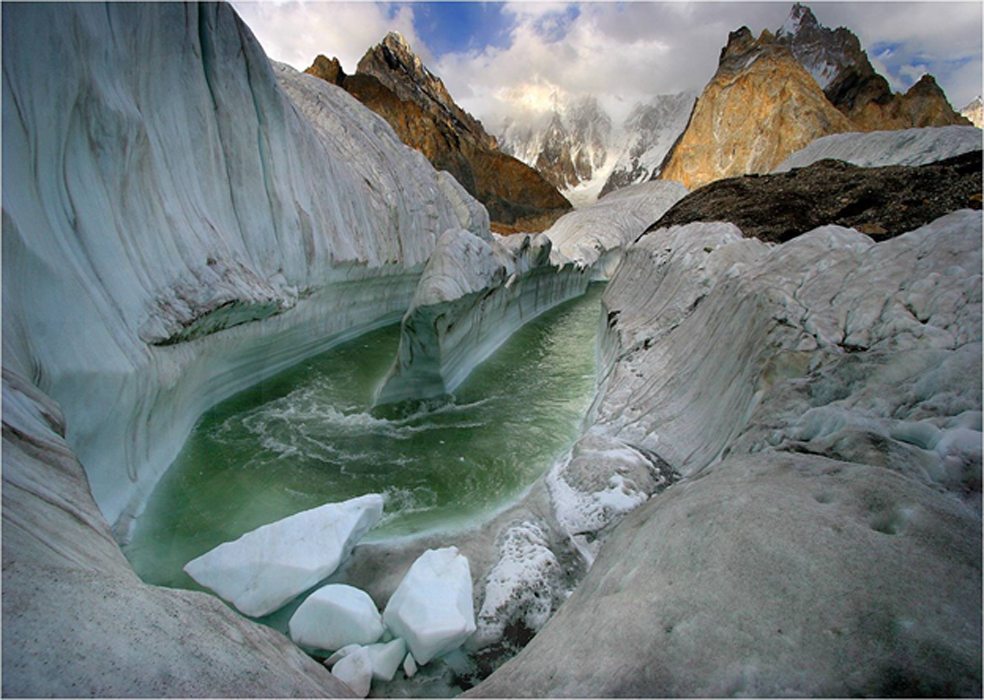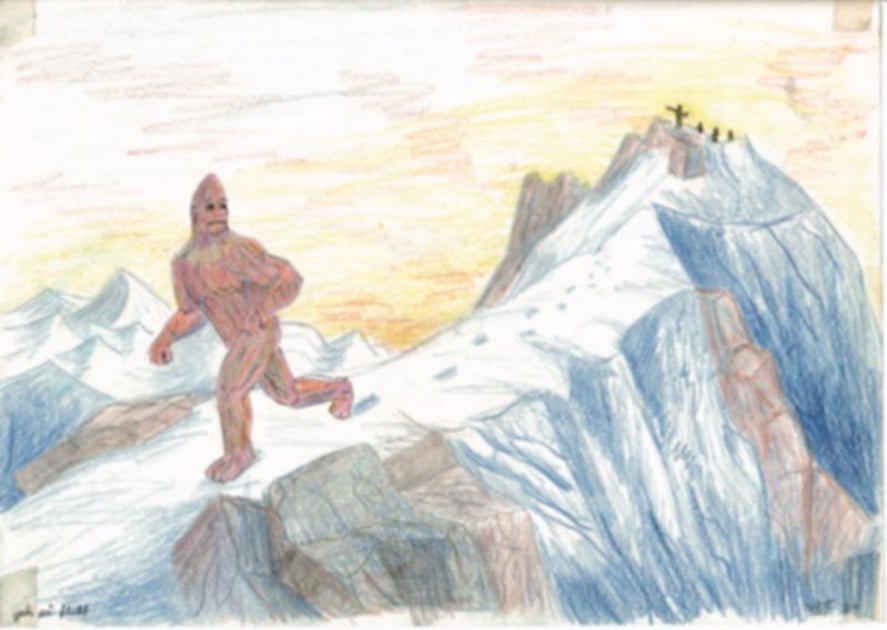
Yeti Seeking the Yeti in the Throne Room of the Mountain Gods
Between China and Russia and the Indian subcontinent lies a formidable mountain complex, sculptured by Asia’s six major mountain systems. Nowhere else on earth will one find such a treacherous and perpendicular barrier to cross than this almost polar region with its icy windswept peaks. Within these chaotic mountain systems lies the Karakorams, probably the mightiest of them all. Enclosing three of the world’s six highest mountains, the Karakorams is known as the ‘Throne Room of the Mountain Gods’. The region from the Pamir and Hindu Kush in the west to the eastern Himalayas was still a blank on the map by the late 1800s.

Illustration of a mythical Yeti upon descriptions from Desmond Doig and sir Edmond Hillary. (Public Domain)
Ancient Religious Rumors of the Yeti
The first known people to cross the Himalayas were Buddhist monks that travelled from China to India in the fifth and sixth centuries. Despite their strange tales of monsters, the snow Yeti and haunted lakes, they have however not been of any help regarding reliable routes taken or their description of the monsters they encountered.
The Bon religion, a pre-Buddhist belief, worshipped the Yeti as a glacier-being that walks like a man with long brown hair covering his whole body. It was only during the 19th century that the first hints of this apelike creature reached the western world. From the western to the eastern Himalayas the local people described this monster as a big man-like creature with long brown hair that is capable of eating a human being. There is also a smaller version that only eats sheep.
The First Sightings
All these stories were disregarded as folklore and fairytales until the first westerners began to make determined attempts to penetrate deeper into the Himalayas. By the 20th century mountaineering expeditions explored the more remote Himalaya Mountains. Most of these expeditions were led by reliable mountaineers that brought back accurate information of routes taken and other observations of the area. In 1951, Eric Shipton came back from an expedition to the Everest region with photographs of Yeti footprints in the snow. His famous photo of a huge human like footprint next to an ice axe for scale immediately caused a reaction in the western world to find the Yeti. He also reported footprints of the yeti on the Biafo glacier in the Karakorams.
More photographs of Yeti footprints began to appear. John Jackson took photographs of many Yeti footprints on a trek to Kanchenjunga. In 1953, Sir Edmond Hillary and Tenzing Norgay reported seeing Yeti footprints near Mount Everest.

Alleged Yeti footprint found by Michael Ward and photographed by Eric Shipton taken at Menlung Glacier on the 1951 Everest Expedition with Edmund Hillary in Nepal. (Public Domain)
In the Himalaya valley of Imja Khole near the beautiful peak of Ama Dablam lies the monastery of Pangboche. It was in 1957 that the oil businessman and adventurer Tom Slick heard of the possible existence of a Yeti hand being kept at this monastery. Many years before the monks had discovered a dead Yeti in a nearby cave and took the skull and a hand to the monastery. Tom Slick and Peter Byrne, a member of his expedition, took photographs of the hand and skull and managed to steal a part of the hand. They asked a friend, James Stewart the famous actor from Hollywood, to smuggle the hand bone to America.




